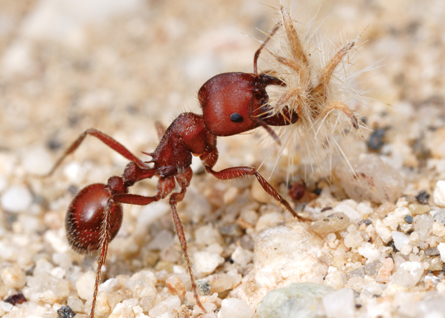Life
The fire ant genome and honeybee personalities, plus more in the week’s biology news
Nourishing hopes for the fight against world domination (by stinging ants), international research teams have unveiled genetic blueprints for the notoriously invasive fire ant and Argentine ant. The genome for a species with milder manners, the red harvester ant, appears with the other two online the week of January 31 in Proceedings of National Academy of Sciences. As well as offering new material to mine for ideas on pest control, the studies reveal insights into ant biology. All three species, for example, show extraordinary richness in genes for taste and smell molecules: 344 for red harvester ants versus 165 for honeybees. — Susan Milius
Personality affects hives’ fates
A honeybee colony’s personality makes a difference in whether it survives a New York winter, Margaret Wray of Cornell University and her colleagues report in a study exploring behavior and evolution. Despite starting as similar-size swarms, 25 colonies consistently differed in such measures as how many bees rushed to check out a possible threat (a brick dropped on the roof), worker speed in dashing over combs and how promptly workers dragged away the dead. High defensive behavior turned out to be the best predictor of overwintering, the team reports in an upcoming Animal Behaviour. —Susan Milius

Lay ’em and leave ’em
A fossil Darwinopterus pterosaur and egg from China support a growing revision in thought about the flying reptiles’ family lives, say researchers from China and the United Kingdom. Unlike modern birds that invest heavily in their young, pteorsaurs may have been more bury-’em-and-leave-’em types along the lines of modern reptiles, the researchers contend in the Jan. 21 Science. They interpret the 160-million-year-old fossil from Liaoning Province as most of an adult female’s skeleton plus an egg that emerged after death. —Susan Milius
Nostrils not equal
When pigeons sniff their way home, the right nostril comes in much handier than the left, a team reports January 27 in the Journal of Experimental Biology. Previous evidence of this asymmetry led an international team of researchers to investigate using 28 homing pigeons outfitted with GPS devices. The team plugged either a bird’s left or the right nostril and then released the birds about 40 kilometers from home. While all birds headed out in the right direction, pigeons with a blocked right nostril took a more circuitous path, stopping and exploring more en route, suggesting that the right nostril is important for processing navigation-related odors. The team notes that humans also favor the right nostril when detecting and evaluating the intensity of odors, hinting at a broader olfactory asymmetry. —Rachel Ehrenberg






